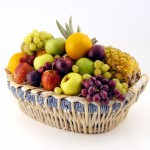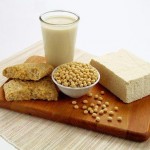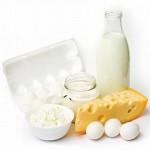There is a right way of eating (as described in the last article) and then there is also the right food that should be eaten. Here is a quick preview of the food that should be included in your diet.
Fill up on colorful fruits and vegetables
Greens: Be adventurous with your greens and branch out beyond bright and dark green lettuce —kale, mustard greens, broccoli, Chinese cabbage is just a few of the options.
—kale, mustard greens, broccoli, Chinese cabbage is just a few of the options.
Sweet vegetables: Naturally sweet vegetables add healthy sweetness to your meals and reduce your cravings for other sweets. Some examples of sweet vegetables are corn, carrots, beets, sweet potatoes or yams, winter squash, and onions.
 Fruit: A wide variety of fruit is also vital to a healthy diet. Fruit provides fiber, vitamins and antioxidants. Berries are cancer-fighting, apples provide fiber, oranges and mangos offer vitamin C, and so on.
Fruit: A wide variety of fruit is also vital to a healthy diet. Fruit provides fiber, vitamins and antioxidants. Berries are cancer-fighting, apples provide fiber, oranges and mangos offer vitamin C, and so on.
Avoid : Fruit juices, which can contain up to 10 teaspoons of sugar per cup; avoid or dilute with water. Canned fruit is often in sugary syrup, and dried fruit, while an excellent source of fiber, can be high in calories. Avoid fried veggies and those with dressings or sauces—too much unhealthy fat and calories.
Water makes up about 75% of our bodies and helps flush our systems of waste products and toxins. Yet many people go through life dehydrated—causing tiredness, low energy and headaches. Caffeinated beverages, in particular, actually cause the body to lose water. Fresh fruits and vegetables, on the other hand, contain plenty of water and can help with hydration, especially when you are looking for an alternative to your eighth glass of water for the day.
Put protein in perspective
Try different types of protein. Whether or not you are a vegetarian, trying different protein sources—such as beans, nuts, seeds, peas, tofu and soya products—will open up new options for healthy mealtimes.
sources—such as beans, nuts, seeds, peas, tofu and soya products—will open up new options for healthy mealtimes.
- Beans: Black beans, navy beans, garbanzos, and lentils are good options.
- Nuts: Almonds, walnuts, pistachios and pecans are great choices.
- Avoid salted or sugary nuts and refried beans.
Downsize your portions of protein. Try to move away from protein being the center of your meal. Focus on equal servings of protein, whole grains, and vegetables.
Add calcium & vitamin D for strong bones
Calcium and vitamin D are essential for strong, healthy bones—vitamin D is essential for optimum calcium absorption in the small intestine. Recommended calcium levels are 1000 mg per day, 1200 mg if you are over 50 years old.
 Great sources of calcium include:
Great sources of calcium include:
- Dairy products, which come already fortified with vitamin D.
- Dark green, leafy vegetables, such as kale and collard greens
- Dried beans and legumes
Limit sugar, salt, and refined grains
If you succeed in planning your diet around fiber-rich fruits, vegetables, whole grains, lean protein, and good fats, you may find yourself naturally cutting back on foods that can get in the way of your healthy diet—sugar, salt and refined starches.
It is okay to enjoy sweets in moderation, but try to cut down on sugar. Sugar causes energy ups and downs and adds to health problems like arthritis, diabetes, osteoporosis, headaches, and depression.
- Give recipes a makeover. Often recipes taste just as good with less sugar.
- Avoid sugary drinks. One 12-oz soda has about 10 teaspoons of sugar in it! Try sparkling water with lemon or a splash of fruit juice.
- Eliminate processed foods. Processed foods and foods made with white flour and white sugar cause your blood sugar to go up and down leaving you tired and sapped of energy.
- Salt itself is not bad, but most of us consume too much salt in our diets.
- Limit sodium to 2,300 mg per day, the equivalent to one teaspoon of salt. Most of us consume far more than one teaspoon of salt per day.
